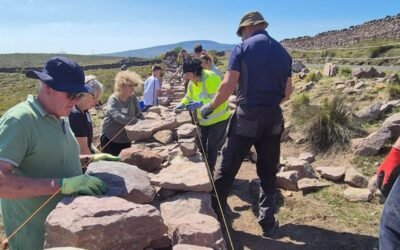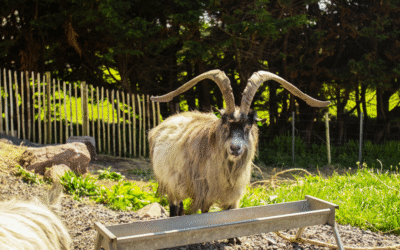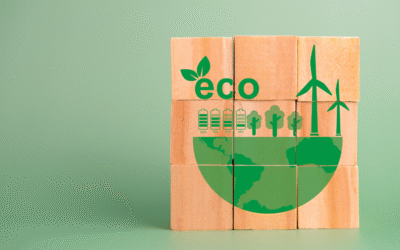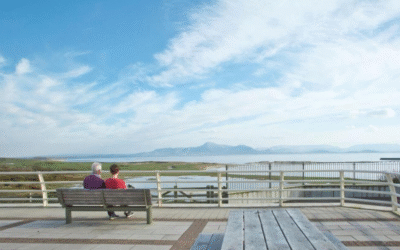Case Studies
Learning from others’ experiences is a great way to start your sustainability journey. We are collecting case studies from individuals and communities that will tell you what they did and how they went about it. These case studies are full or information and resources for you to follow and apply to your own situations. Each case study is 2-3 pages long and are more detailed and technical than stories, but they easy for all readers to follow.
Our Latest Community Case Study
Stone Wall Festival — Rebuilding heritage the regenerative way
What started as a small, hands‑on community weekend became an example of regenerative tourismwhen visitors get involved in doing something while they visit a place that leaves the place better than when they arrived: visitors learn a traditional craft, rebuild a section of wall, and leave a visible legacy on the Great Western Greenway. Read the full case study here.
Where?
Mulranny Co. Mayo
Who started this action?
Led by Mulranny Environmental Group & Local Farmers
Some quick facts about the project
- Talks, and demonstations and guided wall‑building with the Dry Stone Wall Association of Ireland;
- A children’s stone‑art workshop happens at the same time.
- “gentle construction” using people, not machinery.
- In 2025, 15 meters by 2.25 meters of wall were rebuilt (This is about 67.5 m² two faces). See the before/after timeline on the festival poster (p.1 of the case study).
- People from Ireland, UK, Europe, and the US come
- Many people come back year after year
What makes this stand out?
- Tourism can be a tool, not just a goal.
- Each workshop leaves a repair that can be clearly seen by everyone
- At the work rate, it will take about 28 years to fully mend this stretch of wall.
- The groups are deliberately kept small. A strict cap of 30 people makes sure that everyone is safe. There is plenty of time for everyone to learn and talk to the teacher.
- The work shops follow a sucessful example which was started by experts in regenerative tourism
- The project makes sure that the Community, the local place, local nature Nature as well as the visitors get the best out of it
Highlights
- 2015 — festival starts. It is community‑led and supported by The Dry Stone Wall Association of Ireland
- 2023 — featured in an Ireland–Scotland project with the Royal Irish Academy.
- 2025 — 30 people took part repairing 15 meters of dry stone wall.
Why this matters
Dry‑stone walls are living spaces (lichens, insects and worms, frogs, and birds). The festival uses tourism to improve the environment and keep old but important craft skills alive.
SDG Alignment & Keywords
-
SDG 11, 12, 15 (+ SDG 4 via education).
Keywords: dry‑stone walls, heritage craft, meitheal, habitat micro‑niches, gentle construction, regenerative tourism.
Find Out More about the project
Listen to this podcast to learn how the people of Mulranny use the best communications practice to make sure they build alliances within their community
Community Group Best Communications Practice Builds Success
Resources from Climate Connected that you can use to do follow this example in your area
Working with Nature: The Rosmurrevagh Dunes Conservation Project
The Rosmurrevagh Dunes Project is a very strong example of community-led ecological restorationbringing a natural system back to itself: clean and healthy based in observation, care, and long-term commitment. Started by local farmers in 1996, the project began as an answer to bad erosion and ”when. Over time, it became a leading example of learning together and how to protect the land from the sea using natural ways and not just building walls. Today, Rosmurrevagh is known as one of Ireland’s strongest sand dune systems. This was not just against erosion from the sea, but because the community learned to work with nature. Read the full case study to explore the Rosmurrevagh Dunes story and what it achieved.
Where?
Mulranny Co. Mayo
Who started this action?
Led by Mulranny Environmental Group & Local Farmers
Some quick facts about the project
- Started in 1996 by a group of about 30 local farmers managing shared land beside the sea in Mayo
- Project controlled eight big tidal breaches when the sea could have washed away the land across the Machair peninsulaa large piece of land sticking out into the sea that is around it on three sides
- Instead of building walls and big rock, the team planted marram grass and brought down the number of cattle and sheep so there were stronger dunes
- The project won the first-ever National Tidy Towns Notice Nature Award in 2007
- Cares for rare animal and plants like the Belted Beauty Moth and grassland fungi.
What makes this stand out?
- Grew from just controlling erosion to understanding how important to nature and animals the dunes themselves were
- Used on cheaper ways of doing things where ordinary people helped out together over thirty years
- It brought together restoring the dunes with allowing local people and tourists to come and see and learn all about the special environment there.
- The project brought together a strong team made up of the community, the local county council and organisations that are expert in protecting nature: this is a great example to other groups.
- The dunes work in Mulranny show how land we think may be waste land or not important is in fact very important for nature and animals
Highlights
• Marram grass planting stopped the dune washing away while allowing natural life to continue
• Surveys showed Rosmurrevagh as an important site for rare grassland fungi and insects
• Information signs and loop-walks now welcome visitors and locals to the dunes where they can walk and learn about the nature in the area
• The project helped people to think about the problem or erosionwhere the sea washes away the land, dunes or beaches as part of healthy dune nature and not just stopping damage from the sea.
• Shared what it learned with other projects, including the nearby Achill Strand dune restoration
Why this matters
This project shows that important climate and nature protecting work doesn’t always need lots of money. But it does need long-term thinking, trust, and learning. By allowing nature to lead and by building a team of experts and ordinary people from different areas, the Rosmurrevagh Dunes Project has turned an area that was once under threat from the sea into a growing and healthy natural area. It shows us a hopeful way of doing things for communities that have the same worries and problems along Ireland’s coast and beyond.
SDG Alignment & Keywords
- SDG 13: Climate Action
- SDG 15: Life on Land
- SDG 11: Sustainable Cities and Communities
- SDG 17: Partnerships for the Goals
Keywords: dune restoration, nature-based solutions, Machair, community conservation, coastal resilience
Find Out More about the project
Listen to this podcast to learn how the people of Mulranny use the best communications practice to make sure they build alliances within their community
Community Group Best Communications Practice Builds Success
Resources from Climate Connected that you can use to do follow this example in your area
Old Irish Goat Project – Reviving Heritage for a Resilient Future
What started as a search for a lost native breed has grown into one of Ireland’s most innovative examples of community-led climate action. In Mulranny, County Mayo, a local group came together to protect the Old Irish Goat — a rare and ancient animal deeply connected to Irish culture. Today, their work blends conservation, education, and land management in ways that support both biodiversity and climate resilience. Read the full case study to learn more about the Old Irish Goat Project’s journey and impact
Where?
Mulranny Co. Mayo
Who started this action?
Led by Old Irish Goat Society
Some quick facts about the project
- Started by local volunteers and researchers in 2011
- Brought back Ireland’s only native goat breed, once thought to be extinct
- Built a visitor and education centre in Mulranny
- Developed a conservation grazing model for wildfire preventionAdd a Tooltip Text
- They got international attention from the ‘World Economic Forum’ and RTÉ
What makes this stand out?
- Protects a native breed with that is very important for our cultural and ecology
- Uses goats to control plants and reduce the risk of wildfires
- Builds public awareness of the goats and its history through storytelling, tourism, and getting the community involved
- Shows how heritageour culture and our history can be part of climate adaptation
- Important national and international project is run from a small rural village, powered by volunteers
Highlights
- The Old Irish Goat breed is officially recognised as “Native Breed at Risk” (2022)
- National breeding programme approved by the Department of Agriculture
- Grazing project in Howth and Dun Laoghaire used to manage fire-prone land
- The project works closely with Mayo County Council and Atlantic Technological University
- The society works for stronger protection of living heritageour culture and our history in Irish biodiversity policy
Why this matters
This project shows how climate solutions can come from unexpected places. By bringing back a nearly lost animal and having new ideas about how we manage land, the Old Irish Goat Society has created a set of ideas that protects biodiversity, reduces fire risk, and brings communities closer to their environment. It shows that local heritage can play a lead the way in helping make a more stronger and healthier future.
SDG Alignment & Keywords
- SDG 13: Climate Action
- SDG 15: Life on Land
- SDG 11: Sustainable Cities and Communities
- SDG 12: Responsible Consumption and Production
Keywords: conservation grazing, heritage breeds, biodiversity, wildfire prevention, regenerative land use
Find Out More about the project
Listen to this podcast to learn how the people of Mulranny use the best communications practice to make sure they build alliances within their community
Community Group Best Communications Practice Builds Success
Resources from Climate Connected that you can use to do follow this example in your area
From Small Wins to a Community Energy Pipeline: GreenPlan Mulranny (Case Study)
GreenPlan Mulranny turned a volunteer-run tourist office into a public “green hub” for the whole village—swapping bulbs, cutting bills, refilling water bottles, charging e-bikes from solar, and showing live energy on a screen. Those visible, low-cost actions grew into a community energy pipeline (Sustainable Energy Community (SEC) → Energy Master Plan (EMP) → Building Energy Ratings (BERs) → retrofits) and helped set the stage for Mulranny’s Decarbonising Zone.
Where?
Mulranny Co. Mayo
Who started this action?
Mulranny GreenPlan Group
Some quick facts about the project
- Launched: 2015 — Ireland’s first GreenPlan village.
- Green hub: Mulranny Tourist Office (GreenPlan HQ).
- Impact snapshot: ~75% CO₂ reduction at the Tourist Office in year 1; 2,237 plastic bottles avoided by May 2022 via the water bottle refill station; Ireland’s first community e-bike scheme (solar-charged).
- Energy pipeline: Sustainable Energy Authority Ireland (SEAI) SEC member, completed an Energy Master Plan, ran 15 BER assessments, and built a register of opportunities.
- Partners: SEAI mentors, Mayo County Council, LEADER support.
What makes this stand out?
- A public hub concentrates quick wins (low-energy lighting, water bottle refill station, swaps, solar e-bike charging) that residents and visitors can see and copy.
- Behaviour-change first: clear, seven-theme framework; low-cost, measurable actions.
- Place-based innovation: invasive rhododendron used as biofuel instead of turf.
- Data matters: the water bottle refill station app tracks bottles avoided, turning action into evidence.
Highlights
- Energy & retrofit at HQ: insulation + full low energy lighting conversion; later solar panels + battery with a lobby screen showing live generation/usage.
- Community “light-bulb swap”: first of its kind in Ireland.
- Greener Energy Showcase Day: hands-on demos with Mayo County Council & suppliers (grants, practical tips).
- Water & waste: county’s first water bottle refill station; battery/WEEE collections; book reuse; non-toxic “Cleaning Naturally.”
- Mobility: community e-bike scheme (solar-charged) + free e-bike sockets at the hub for Greenway users.
- Social layer: Food Drop Box (holiday homes → Food Charities); invitation letter asking visitors to join the GreenPlan
Why this matters
GreenPlan Mulranny shows how visible, low-cost actions in a public place can unlock a structured energy journey for a whole community. By pairing everyday behaviour change with an Energu Master Plan, Building Energy Rating pipeline and practical services (water bottle refill station, solar e-bike charging), the village created a replicable model that advances climate action, strengthens community, and informs Decarbonising Zone delivery.
SDG Alignment & Keywords
SDG 13 Climate Action · SDG 12 Responsible Consumption · SDG 11 Sustainable Communities · SDG 15 Life on Land · SDG 17 Partnerships
Keywords: community energy, behaviour change, water bottle refill station, e-bikes, solar PV, circular economy, biodiversity, Greenway
Find Out More about the project
Listen to this podcast to learn how the people of Mulranny use the best communications practice to make sure they build alliances within their community
Community Group Best Communications Practice Builds Success
Resources from Climate Connected that you can use to do follow this example in your area
Mulranny 2030: From Climate Action Hub to UNESCO Biosphere (Case Study)
Once a pass-through village on the Wild Atlantic Way, Mulranny has reinvented itself as a hub for climate action and participatory governance. Building on its Decarbonising Zone plan and a decade of community-led innovation, the village is now aiming for its boldest move yet: joining UNESCO’s global network of Biosphere Reserves.
Where?
Mulranny Co. Mayo
Who started this action?
Community Futures · Mayo County Council · SWMDC · NPWS · TASC
Some quick facts about the project
- Timeline: 2021–ongoing (Mulranny 2030 Vision → Decarbonising Zone Action Plan → UNESCO feasibility)
- Partners: Mulranny Community Futures; Mayo County Council; South West Mayo Development Company (SWMDC); National Parks and Wildlife Service (NPWS), including Mayo Dark Sky Park; Fáilte Ireland and the Clew Bay Tourism Network; Climate Action Regional Office (CARO); Wilderland, Think Tank for Social Change (TASC); and University partners.
- Focus: Climate resilience, regenerative economy, biosphere stewardship
- Status: Feasibility & stakeholder process (UNESCO nomination file targeted for 2027)
- Scope: Linking Mulranny’s seascapes, landscapes and skyscapes under a biosphere framework
Global link: Would join 748 UNESCO Biospheres worldwide (134 countries)
What makes this stand out?
- Bottom-up governance muscle. From Community Futures surveys to Decarbonising Zone Huddles, Mulranny has built a durable participatory system.
- Biosphere as an umbrella. The designation could align dozens of projects (salt marsh, peatland, Dark Skies, Old Irish Goat, regenerative tourism).
- From village to region. While rooted in Mulranny, the concept scales across Mayo, positioning the county in Europe’s Atlantic Ecological Corridor.
- Networking Communities. Farmers, scientists, artists, local authorities and communities co-create the vision.
Highlights
- Mulranny 2030 sets out a future of an empowered community, a low-carbon economy, and a thriving biosphere.
- In 2024, a feasibility study and stakeholder consultations confirmed the potential for UNESCO Biosphere designation.
- Next Step. In 2026, Mulranny stakeholders are preparing to engage with the community and design a shared governance model.
Why this matters
This is not just about conservation. It is about showing how a small coastal village can shape global sustainability pathways. Mulranny’s trajectory demonstrates that community-led action, scaled through frameworks like UNESCO’s Man and Biosphere programme, can connect local resilience with international commitments.
SDG Alignment & Keywords
- SDG 9 – Industry, Innovation & Infrastructure
- SDG 12 – Responsible Consumption & Production
- SDG 11 – Sustainable Cities & Communities
- SDG 13 – Climate Action
- SDG 15 – Life on Land
- SDG 14 – Life Below Water
- SDG 17 – Partnerships for the Goals
Find Out More about the project
Listen to this podcast to learn how the people of Mulranny use the best communications practice to make sure they build alliances within their community
Community Group Best Communications Practice Builds Success
Resources from Climate Connected that you can use to do follow this example in your area
Mulranny Community Futures & Promenade (Case Study)
A Scottish-style, household-led consultation gave Mulranny a clear, shared brief: footpaths, safer crossings, and a seafront civic space. With a Village Design Statement (2012) to turn that mandate into drawings, the community and council delivered continuous footpaths, traffic calming, and the Mulranny Promenade—even during austerity—shifting the N59 corridor from car-dominated to people-first and setting the stage for later climate actions.
Where?
Mayo
Who started this action?
Community Futures Steering Group · Mayo County Council · TII
Some quick facts about the project
- Timeline: 2008–2015 (consultation → Village Design Statement → construction)
- Lead & Partners: Mulranny Community Futures (steering), Mayo County Council (Community Futures & Heritage), Transport Infrastructure Ireland (TII)
- Focus: Public realm, pedestrian safety, active travel, destination quality
- Investment: ~€3m (footpaths & Promenade delivered during the recession)
Outcome: Continuous footpaths, safer crossings/traffic calming, benches & picnic tables, bike parking & pumps, and a new seafront Promenade linked to the Greenway
What makes this stand out?
- Design-WITH, not for. A whole-household survey and published plan produced a durable social mandate.
- VDS as a delivery tool. The Village Design Statement (2012) translated priorities into fundable vision with buildable drawings.
- Built in hard times. Capital was secured and delivered during austerity (~€3m), proving timing isn’t destiny.
- Platform for climate action. The people-first main street became the visible stage for GreenPlan measures (low-energy lighting, racks, recycling, cycleways).
Highlights
- Community Futures consultation (2008) → published plan; steering group (2010); clear ask: footpaths & traffic calming.
- Village Design Statement (2012) visualised a pedestrian-friendly Mulranny, capturing and visualising local ideas.
- Sequenced delivery: church end → village centre → Promenade; added benches, picnic tables, bike parking & pumps.
- Outcomes: safe everyday walking/cycling (kids to school), more dwell time & local spend—from pass-through to destination.
Why this matters
Mulranny shows a replicable governance engine: design-WITH → mandate → delivery. Start with a plain-language, whole-household survey, use a VDS to draw the future, align road authorities early, and build in phases. The result is not just safer streets—it’s a visible public realm that other sustainability projects can plug into.
SDG Alignment & Keywords
SDG 11 Sustainable Cities & Communities ·
SDG 3 Good Health & Well-Being (active travel)
Keywords: participatory planning, Village Design Statement, promenade, walkability, active travel, place-making








